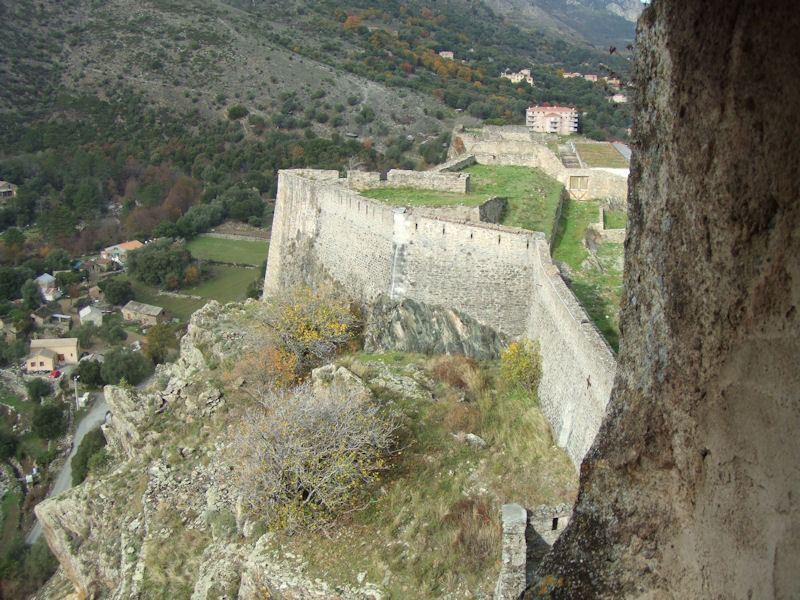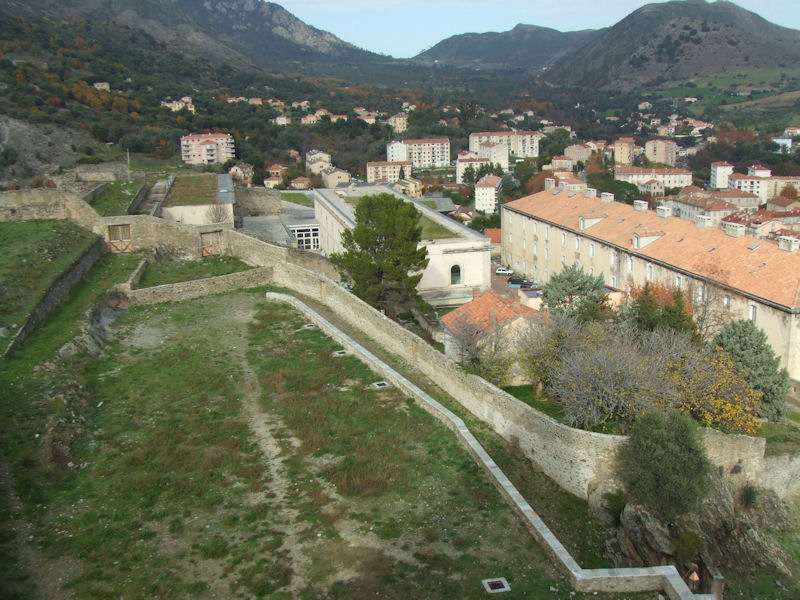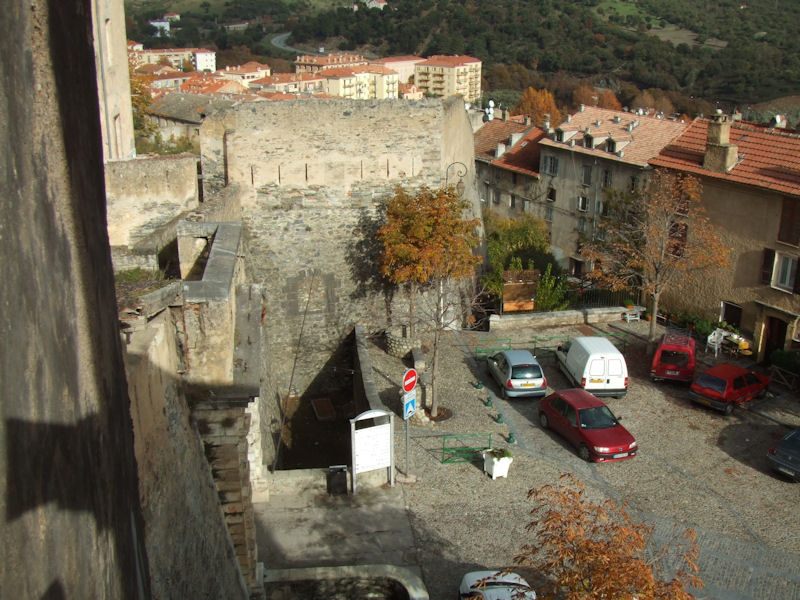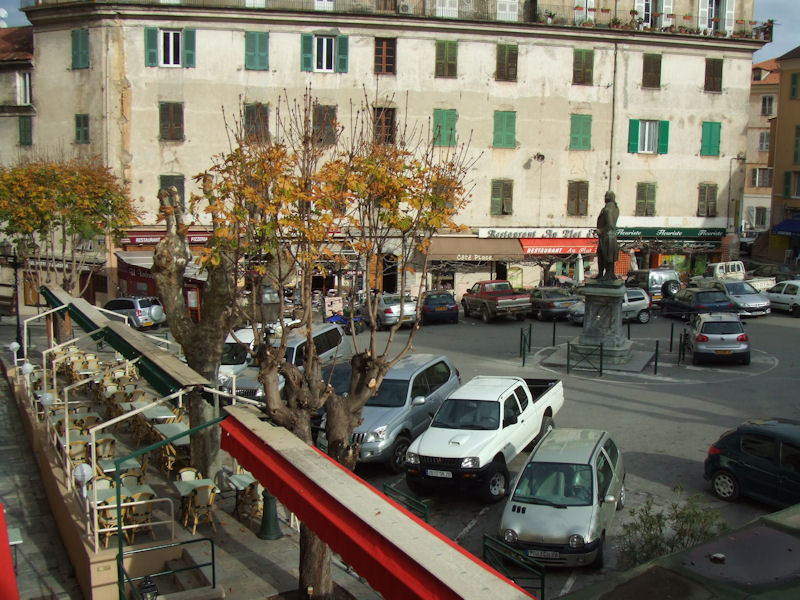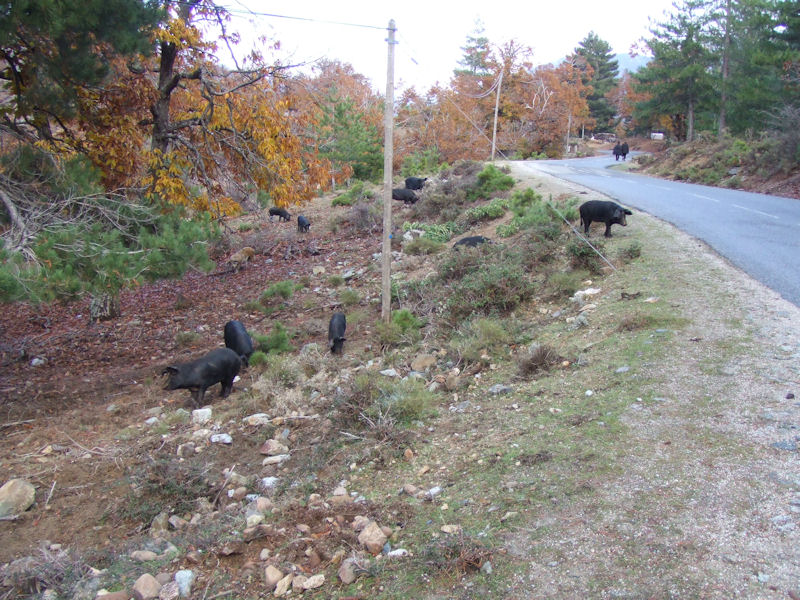|
Corsica in the Off Season, 2007 Corsica, the grudgingly-French island off the coast of Italy. We're catching the off-season rates, late November and early December 2007. You may not find this terribly rewarding unless you're included here, so this is a good time for casual and random browsers to turn back before they get too caught up in the sweep and majesty of the proceedings and can't let go. Corte
This is the Église de l'Annonciation, founded in the 15th century but largely baroquized a few centuries later.
The view across the Place d'Armes from the solemn gate
At the top end of the Citadel looms the Nid d'Aigle, built in 1419 by a medieval thug called Vincentello of Istria.
The battlements all around Vinny's Eagle's Nest were added later in the style of the great 17th century French military engineer Vauban, so we feel justified in checking this place off on our checklist of Vauban bastions visited.
The sole stairway up into the Nid d'Aigle.
The view from the top of the Citadel, away from the city. We're looking down into the confluence of the Restonica and Tavignano valleys -- ground level is at about 485m asl, and the top of the Citadel rises 111m above that.
Kristin reading out historical facts about Corte as I try to scribble down my notes as fast as I can.
The belvedere at the end of the Nid d'Aigle
The top of the Nid d'Aigle, with the remains of, as I recall, an ancient donjon, now past its sell-by date and fenced off.
The view down into the lower village, with the new Università de Corsica Pasquale Paoli, Corsica's only university. Mr Paoli founded a university here in the heyday of his constitutional republic in the 1760s, but it disappeared with the French invasion of 1769. Corsican separatists, blowing up post offices and from time to time French officials as well in the 1970s, demanded a replacement, and in 1981 the new Uni opened its doors and now instructs and enlightens about 3,500 students. From what we saw, they seem to be a very international student body.
The Inspiration of Vauban lives on.
From the Citadel looking north (towards the valley of the roaming pigs)
Mr Peck would not have made a good sentinel in a medieval watchtower, without crouching for hours on end.
Kristin imagines what being shackled to this wall must have been like, back when they did that sort of thing to people. Prior to Guantánamo Bay.
Courtyard of the Nid d'Aigle of Corte
Assembly line toilets
The light at the end of the tunnel
The upper village from the Nid d'Aigle
Glaring down upon the front gate of the Citadel and the Place d'Armes outside the solemn front gate
Kristin looking for lunch
A village square, with somebody commemorated in it. Let's go see.
But where's lunch?
The Place Paoli, and that's Pasquale or Pascal or whatever there in the centre of it. The restaurant Pascal Paoli is just over to the left and, trust me, rather than dine there, hang yourself, if that's your only choice.
Looking down the Cours Paoli in the Corte upper town, the Hotel du Nord about halfway along.
Pigs! Free Range Pigs!
Saint Immanuel Velikovsky. We've driven from Corte up the valley of Scala di Santa Regina (a fairly disconcerting 20km single-lane road halfway up a gorge) to the Col de Verghio (1467m). This Visitor from Elsewhere is meant to be Jeezus, by the sculptor Bonardi (surely not the same guy who makes the tinned ravioli in America), somehow defaced, literally.
Kristin and a potential friend
Free range pigs ranging freely
Kristin doing her hanged wolf imitations.
Some shamanistic purpose to this, no doubt. In Oklahoma, farmers hang dead coyotes from the highway fenceposts in the belief that that marks off their territory from predators, like pissing your way around your frontiers. It's a very uncomfortable sight, in Oklahoma, a straight flat line of fenceposts three kilometres into the distance with this sort of thing hanging off them. But, well, then there's Oral Roberts.
Pigs and cows getting together for an early evening soirée.
Kristin minding the Kangoo in the forest of Niolo, or Niellu, as her admirers return from the mens' room
The lake of Calacuccia, a dammed reservoir actually
And a bit of the gorge of Santa Regina, as twilight falls down upon us.
Base map: http://z.about.com/d/goeurope/1/0/g/Y/corsica-transportation.gif
|
Corsica, 2007 Corsica, 2009
|
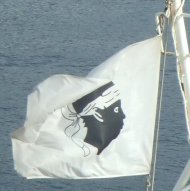 Dwight Peck's personal website
Dwight Peck's personal website













